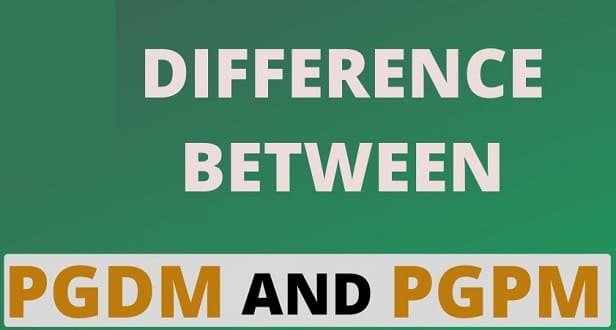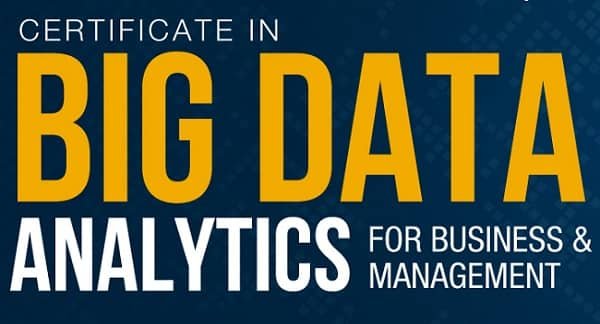Various courses are available for students to further their careers. Among these, MBA tends to be one of the top picks for the management stream students. But there are new courses and certificates these days that are making the rounds and staking better claim to in-depth knowledge enhancement and skill development. A couple of these are PGPM and PGDM.
However, students often tend to get confused between these two subjects. They are vaguely similar but if you delve deep, they also seem to be miles apart. That’s contradictory, but that’s how the nature of similarity of these subjects is. We here take a look at both of these subjects and elaborate on the contents and their difference. Read along.
What is PGPM?
PGPM stands for Post Graduate Program in Management. This is an MBA-based program or master’s level program that runs only for one year. The course is known by various acronyms in different business schools like Post Graduate Program, Executive Post Graduate Program,and many more. This course is devised as an alternative for students who want to pursue an MBA program but cannot go into a full-time academic course for two years.
Since the course is only for one year, students can opt for this without hampering their professional outlook. This is the reason why PGPM is one of the top picks for professionals who already have experience working. This is great for people with 2-3 years of experience. The course allows students to develop skillsets and knowledge in the latest management methodologies and business concepts and pair that with their existing practical knowledge.
What is PGDM?
PGDM stands for Post Graduate Diploma in Management and is a two-year program that is often taken as a full-fledged substitute course for MBA. Since it’s a two-year program, it tends to cover the aspects of management in-depth and provide students with the knowledge of management, business execution, strategic management, and more. Many top universities offer PGDM courses instead of the MBA program for students.
These courses are perfect for people who have completed their bachelor-level programs and looking for a post-graduate or a master’s level degree. The two-year period marks a full-fledged enrollment and learning exercise for the students and thus students going for PGDM courses are advised to go for a full course.
- Also Read: PGP Vs PGDM: What’s The Difference?
PGPM Vs PGDM: What’s The Difference?
We talked about the overview of both of these courses in the above segment. Let’s find out the difference based on various parameters on specific levels. We here compare both the courses on different metrics to find the difference between them.
Course Eligibility
When it comes to course eligibility, here’s how both the courses stand against each other:
PGPM: PGPM course requires a student to have completed the entrance test like GMAT, CAT, CMAT, or XAT. These entrance tests are a marker for the PGPM course. The type of exam varies according to the institute so it is advised to see the eligibility entrance test and then prepare for the one. Furthermore, the course also requires students to clear group discussion round, written test and interview.
PGDM: PGDM course requires students to clear the CAT tests to become eligible for the course. Since it’s a full-fledged master’s program, students need to have CAT tests completed and should score good marks. Apart from that they also need to go for the written test, group discussion, and other interview tests to determine their eligibility.
Curriculum
Here’s a comparative meter based on the curriculum for both courses:
PGPM: PGPM has a one-year course period and hence has a lesser curriculum than that of the PGDM. Still, PGPM focuses on the practical skillset and the current modern scenarios to help upgrade the students further ahead. The course is designed with a unique perspective and has practical exposure well ingrained with it. The course has a major focus on the subjects like Financial Accounting and Reporting, Corporate and Management Finance, International Finance, Corporate Law and Business laws, Ethics in Business Environment, and Data Visualization.
PGDM: PGDM is a full-fledged course and runs for two years. As such the course has a comprehensively larger base coverage than the PGPM course. The course structure is divided into four semesters of six months each. The first three of these semesters focus on imparting students with the in-depth skillset and knowledge while the fourth semester focuses on practical exposure. Major course areas for students are Finance, Marketing, Business Marketing, Operations Management, Human Resource Management, Information Systems and Management, Strategic Management, Data Analysis,and more.
Skillset and Learning
This section looks at the comparison based on the skillset and the learning exposure:
PGPM: PGPM course looks to develop leadership and practical knowledge in students. This course is something that can be paired with your existing practical knowledge and leveraged further ahead. Here’s what you learn in this course:
- Financial Management
- Marketing Management
- Macro and Micro Economics
- Corporate Finance
- Business Law and Exposure
- Ethics and Communication
- Operations Management
PGDM: PGDM course is designed to help develop the managerial level skillset and knowledge in students. It allows students to learn and be proactive against various future impending management scenarios and cases. It also allows students to be aware of the happenings and know the right behavioral attitude to tackle them. Here’s what they learn in PGDM:
- Professionalism
- Managerial Skillset
- Sustainability
- Strategic Building and Management
- Leadership Skillset
Future Scope
Here’s how the future scope stands for both of these courses:
PGPM:This course has been gaining ground and becoming one of the preferred ones in recent times. The course has become popular among students and working professionals who want to progress their careers ahead. This has also become a good alternative for students who cannot go for the full-fledged MBA programs. The industry, in particular, has also recognized the potential of the course and is looking further to award students with this degree good working exposure. The candidates are likely to go into the corporate levels, managerial levels, and into sectors like finance, management, and more.
PGDM: PGDM comes with a substantially higher level of scope than PGPM especially because of the course coverage and the tenure of the course. Since it’s a proper course rather than a certificate-level course, this gets higher exposure. The students with a degree in PGDM are likely to go into the roles of a business consultant, finance manager, administrative manager, public relations manager, marketing executive, and more. They are likely to go into industries like finance, MNC’s, PSU’s and more.
Course Cost
Here’s the cost comparison for both of these courses:
PGPM: This course is a one-year program and has a lower cost than the PGDM. The course comes with a price range of 5 lacs to 20 lacs. The price range varies according to the level of college or university.
PGDM: This course has a range of feesthat generally goes from 2 lacs to 20 lacs. The minimal fees are for regional institutes while the high-end business schools charge around 20 lacs for the course.
Salary Structure
Here’s the salary structure comparison for both of these courses:
PGPM: This course is designed for existing professionals who already are working. This course is likely to improve the salary quotient of the professionals by 30% to 40% in their existing profile or provide them new job opportunities with a higher salary bar.
PGDM: This is a post-graduate program and students often go for the job after this. The entry-level package starts from 6 lacs for the students and can go for 20 lacs based on the placement schemes.
Wrapping Up
Both of these courses have their own set of pros and cons. Since these two courses are targeted ata separate base of students we can advise that students with the targeted field go for their most suitable option. Both of these courses do boast a good career ahead.

Rahul Kumar is a passionate educator, writer, and subject matter expert in the field of education and professional development. As an author on CoursesXpert, Rahul Kumar’s articles cover a wide range of topics, from various courses, educational and career guidance.




